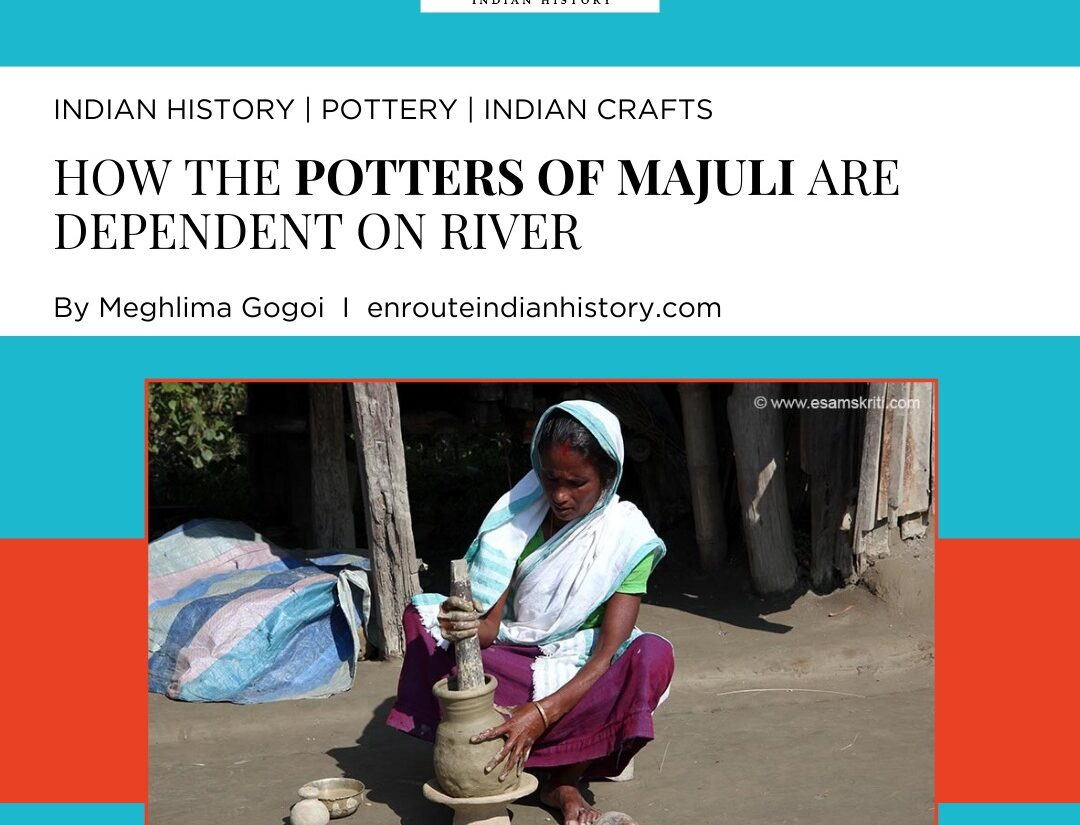Rice Production in Medieval Assam: How Ahoms Influenced Wet Rice Cultivation
- EIH User
- October 20, 2023
At the beginning of the 13th century, Upper Burma and Western Yunnan were occupied by different Tai ethnic communities who found a commonality in their Shan origin and formed a group of small states. Located among these different Tai groups was the Tai Ahom sub-group of people who eventually made their way into North East India and formed a new state that ruled for almost 600 years.
It was around 1228, when Sukapha (or rather Siu-ka-pha), a prince of the Tsu clan of the Mao-Shan sub-tribe, originally from Mong Mao in Yunnan Province, reached Namrup in the Brahmaputra Valley. This is considered to be the official beginning of what came to be known as the Ahom dynasty.

Chao Lung Sukapha, the founder of the Ahom Dynasty
The Ahom dynasty is considered to have been the most widely influencing entity as far as most of modern Assamese cultural heritage is considered. Food, dress, festivals, language, music, and every other marker of intangible heritage in Assam have been shaped in various degrees by the influences brought in by this Indo – Mongoloid race of rulers. In this piece, we are going to take a look at the influences they brought to the realm of agrarian practices.
But before we understand the influence of Ahom rule over agriculture, it might help to understand the landscape of Assam better first. The conditions in the Brahmaputra Valley were very much apt for the growth of agriculture, especially paddy cultivation. The climate in this region is hot and humid. The Brahmaputra Valley has alluvial soil, which is good for farming, and has more sand and slit than clay, which is good for paddy cultivation. The Brahmaputra Valley contains several tributaries as well, including Kameng, Manas, and others, and these rivers transport sands, clays, and stones from the Meghalaya Plateau and the Himalaya Mountains, which helped to create the Brahmaputra Valley’s fertile plain. As a result of such conditions, agriculture was already the base of subsistence in this area and also the main source of revenue for the preceding Kamarupa dynasty.

Map of the Brahmaputra Valley
So what changed with the advent of the Ahom dynasty? For this taking a closer look at their Tai origins shall be helpful. The Tai communities of southern China and Southeast Asia were very prolific in their practice of wet rice cultivation. Rice was not just a meal in many Southeast Asian nations; rice-centered agriculture has had a significant impact on their society, economics, politics, and ideological activities. Even for people for whom rice was a very common sight, festivals, customs, rituals, and languages commemorate the value of rice planting, and something enchanted, and more spiritual, still emanates from the depth of the lush fields. This is precisely the influence the Ahoms brought into forested and nomadic tribes that inhabited North East India with them.
What is meant by wet rice cultivation exactly? This particular type of cultivation of rice begins by planting on dry land, transferring the seedlings to a flooded field, and draining the field before harvesting. It is this particular practice that they were able to entrench into the very social fabric of mediaeval Assam. The words ‘flooded field’ might have rung a bell, and precisely so because, as already established, the Brahmaputra river which is the source of the immense fertility of the Assamese valleys also continues to this day regularly flood the landscape, making it a golden site for wet rice cultivation.

A flooded paddy field in Majuli, Assam
The land system was structured around the individuals who were involved in it, as opposed to the land itself. By working together, the Ahoms were able to cultivate wet fields and wetlands and make them suitable for the growth of paddy cultivation. Community lands used for agriculture were allocated to several households throughout the Ahom dynasty. The whole Ahom State was built on and supported by this kind of communal land ownership.
The majority of the territory, barring the land coming under land grants and forested areas known as habi, was thus sent under this system of shifting agriculture during the early period of Ahom occupation of the valley. Despite the Ahom monarchs’ best efforts, the valley’s agricultural development was occasionally hampered by both natural and human forces. But to overcome them, the Ahom kings made full use of the available labour force and every modern technology available, which allowed them to cultivate a sizable area of land even during the early years of their rule. New lands were either handed to the peasants for free or in exchange for a flat sum of the produce’s earnings. The peasants were encouraged by this approach to cultivate fresh land.
According to early sources, the Ahom monarchs erected several spurs, roadways, and embankments with the help of Paik workers to prevent flooding and defend the agricultural fields from the Brahmaputra and her tributaries. To ensure that the flat, level fields made available for rice farming could hold just the quantity of water required for good agriculture, irrigation, and flood control operations were carried out as a matter of state policy during the Ahom rule, a pioneering effort in the agrarian strategies implemented in the valley.
Four primary types of rice were widely cultivated; Ahu or Aus, Bao, Lahi, and Sali. In the highlands, Ahu rice is seeded in June and harvested without irrigation in September. Marsh rice, also known as Bao, is cultivated in April and harvested in November or December. Although it should be planted when the water is low, it needs deep water. Lahi rice can withstand water depths of up to two feet and is grown in low-lying areas during the rainy season. In June, Sali rice is seeded, and in December, it is harvested. It needs a lot of water.
Apart from these four essential types, many other peculiar forms of rice also began to be cultivated. Chakua, Bora, and Joha are three unusual rice types that may be found in Assam. Because Chakua and Bora are so tender, Assamese people used to consume them raw by simply soaking them in water, a preparation known as Komal Chaul or Boka Chaul.
The importance of rice has been reflected by textual sources of the mediaeval period as well. For instance, the Yogini Tantra, a Sanskrit text from Assam written in the early sixteenth century, mentions up to twenty different types of rice, including raja, soma, briha, and ashoka. A literary work from mediaeval Assam called the Katha Guru Charit also makes frequent allusions to the production of rice and lists its variations.
A wax model depiction of traditional post-harvest processing of rice.
The biggest cultural manifestation of this is perhaps the Bihu festival, in which the special foods made are almost entirely rice-based, especially the rice cakes. Pitha is the name for rice cakes in Assamese and is frequently cooked using bora saul, a distinct kind of sticky rice. Til pitha, chunga pitha, ghila pitha, xutuli pitah, dhup pitha, bhapot diya pitah, pheni pitah, pani pitha, etc. are a few of the pithas.
By the time of Kati Bihu or Kongali Bihu, the rice in the fields is in the growth stage and the farmer’s granaries are nearly empty. At the foot of the home tulsi plant, the granary, the garden (bari), and the paddy fields on this day, clay lamps (saki) are lit. Cultivators spin a piece of bamboo and recite rowa-khowa chants and charms to fend off pests and the evil eye to preserve the ripening rice. Most important of course is the Assamese version of rice beer known as xaj consumed during almost all the important folk cultural festivals.

A traditional Assamese Bihu Jolpaan
Due to the overwhelming dominance of rice in Assam’s agriculture, which is reflected in every area of their culture, the Assamese people are frequently referred to as having a “Dhanya Sanskriti” (Rice Culture). The different facets of paddy are a mosaic of the sayings, myths, rituals, taboos, beliefs, position of a person, and countless other characteristics of Assamese culture. Because of this, rice for the Assamese people represents more than just a crop or food. It also symbolizes ‘life’ to them.
Reference
- Agrarian Structure of Medieval Assam by J.G. Nath, Concept Publishing Company, New Delhi, 2002, p. 60
- Traditional knowledge and method of various rice preparations in Assam by A Bora, Indian Journal of Traditional Knowledge Vol. 19 (4) October 2020, pp 897-901
- A study on the economic aspect of the Ahom kingdom of Assam from the background of the Paik system Krishna Kalita, International Journal of Management (IJM) Volume 11, Issue 8, August 2020, pp. 937-940
- Role of Su-Ka-Pha in Founding Ahom Kingdom in Assam Ms. Piku Doley, Pratidhwani the Echo A Peer-Reviewed Indexed International Journal of Humanities & Social Science Published by: Dept. of Bengali Karimganj College, Karimganj, Assam, India
Image Source
- Telegraph India
- Scroll.in
- iStock
- Alamy
- Self, Clicked in Kalakshetra Museum in Guwahati
- Shutterstock
- December 28, 2023
- 11 Min Read
- November 1, 2023
- 6 Min Read
- August 17, 2023
- 6 Min Read



















